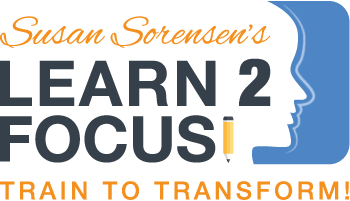How Attention Works
/We tend to talk about inattentiveness in our children, but we often forget how complex it actually is to pay attention. Take a look at our own lives. How often do we walk into a room and then forget what you came into the room for? Or, how often have we been sitting in a lecture and find ourselves automatically reaching for our phones?
Psychologists have been trying to figure out what attention actually is. The more we understand how attention works, the more possible it may be to help understand why some children have more problems paying attention than others.
According to this article (https://www.scilearn.com/blog/pay-attention) there are several stages of attention:
1. Alerting
We need to be in an alert state to perform well. The chemical norepinephrine modulates alertness in frontal and parietal brain regions. Thanks to warning signals like a red light on the street, this alert state can be triggered and we can rapidly change from a resting state to being more receptive.
2. Orienting
When you are oriented, you know where you are, who you are with, the day and time and most important, what is needed to perform the relevant task at hand.
3. Executive Skills
This is similar to self-control, where you maintain attention to accomplish a goal. One type of executive attention that’s important for academic success is selective attention, where you can involve one sense more than or together with others. For many children, this can be a challenge. They have to move from the world of multi-sensory experiences in play, sports and media (especially on-screen phones, tablets and TV), to sitting still and selectively attending to a teacher in a classroom. This can be particularly difficult for children with ADD or ADHD, who have a physiological limitation on their ability to listen and learn on demand.
The good news is that the brain can learn attention. Many scientists have found that brain-training exercises like the Fast ForWord Language program and Interactive Metronome can train selective auditory attention or combined auditory and visual attention – give us a call to learn more!

